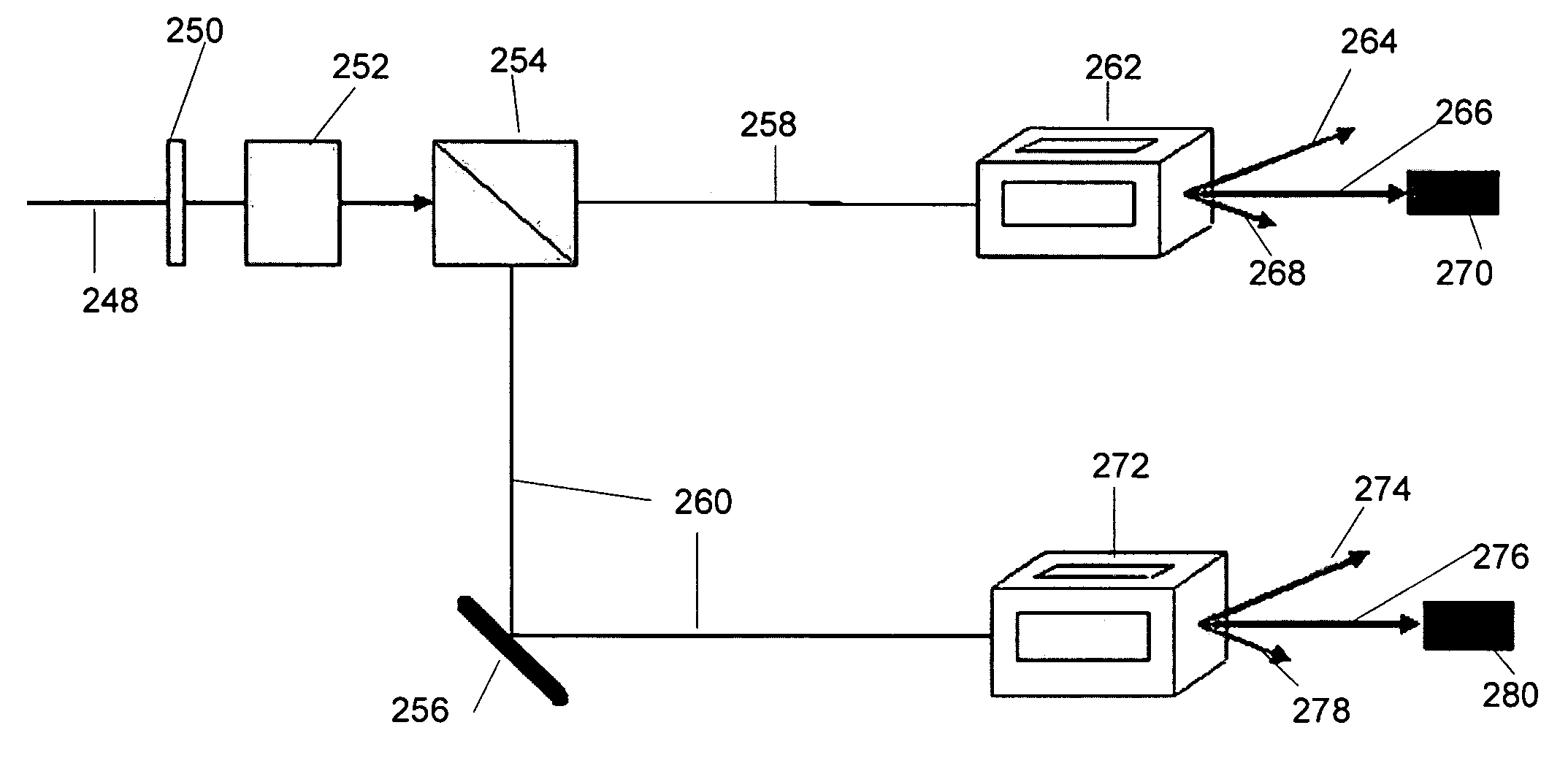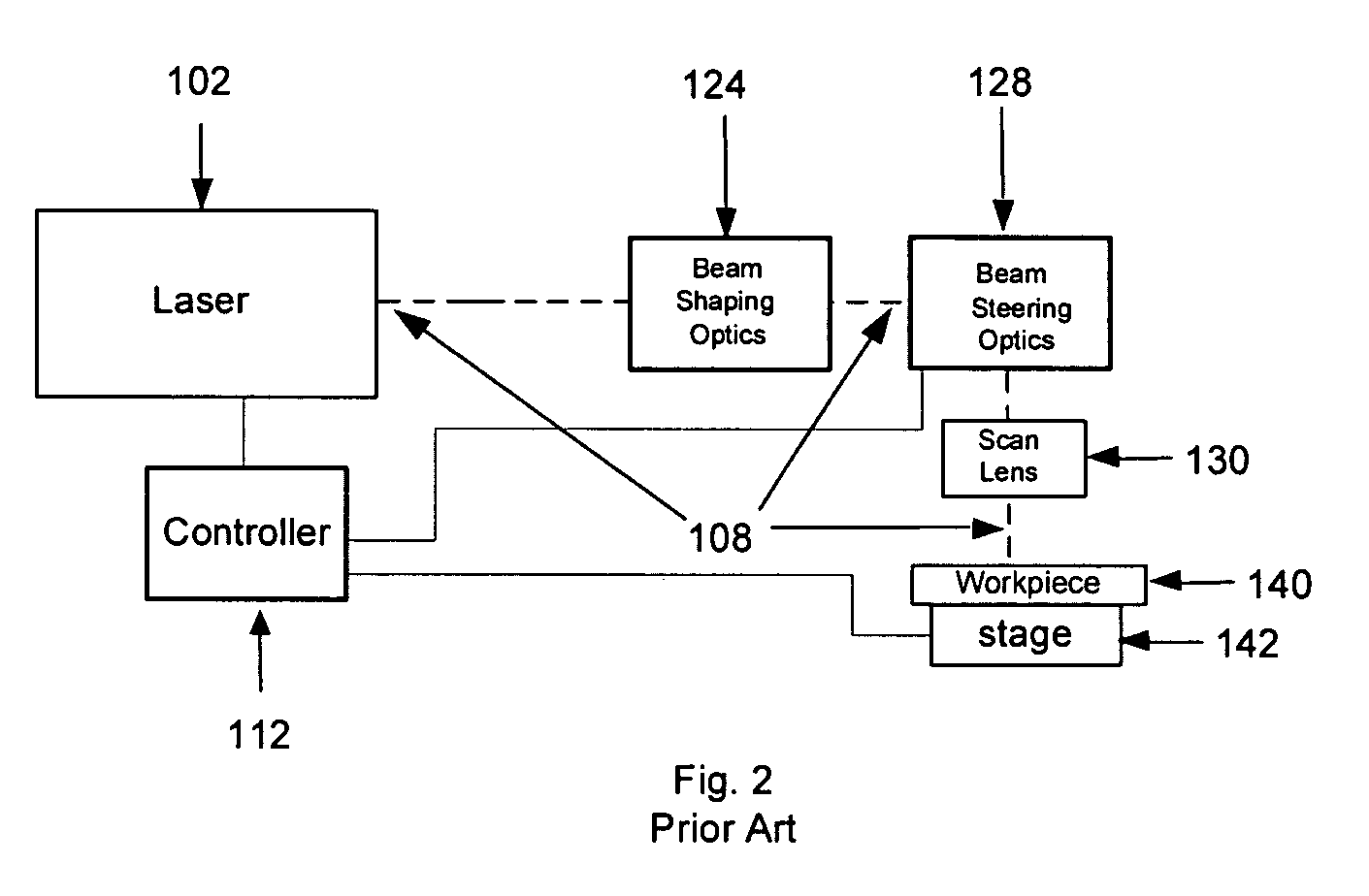Method and apparatus for laser drilling holes with tailored laser pulses
a laser pulse and laser drilling technology, applied in the field of laser processing a workpiece, can solve the problems of reducing the throughput of via formation, unsatisfactory heating effect of via structure, etc., and achieve the effect of reducing throughput, and reducing material removal tim
- Summary
- Abstract
- Description
- Claims
- Application Information
AI Technical Summary
Benefits of technology
Problems solved by technology
Method used
Image
Examples
Embodiment Construction
[0025]Efficiently drilling high-quality vias involves removing substantially all insulating material from the via volume with the fewest laser pulses while avoiding damage to the surrounding substrate. This can be accomplished by drilling a via with one or more tailored pulses possibly in combination with incubation pulses and non-tailored pulses as described herein. Three measurements of pulses are relevant to via drilling. The first is peak power, expressed in Watts, which measures the highest instantaneous power reached during the pulse duration. The second is energy, which is calculated by integrating power over the duration of the pulse. When the beam spot size is included into the consideration, term of fluence is more often used which is in a unit of Joules / cm2, The third one is the profile of the power. It is the rate of how fast the laser energy is applied to the via site versus time.
[0026]Maximum laser pulse fluence is determined by the damage threshold of the substrate be...
PUM
| Property | Measurement | Unit |
|---|---|---|
| response time | aaaaa | aaaaa |
| wavelengths | aaaaa | aaaaa |
| wavelengths | aaaaa | aaaaa |
Abstract
Description
Claims
Application Information
 Login to View More
Login to View More - R&D
- Intellectual Property
- Life Sciences
- Materials
- Tech Scout
- Unparalleled Data Quality
- Higher Quality Content
- 60% Fewer Hallucinations
Browse by: Latest US Patents, China's latest patents, Technical Efficacy Thesaurus, Application Domain, Technology Topic, Popular Technical Reports.
© 2025 PatSnap. All rights reserved.Legal|Privacy policy|Modern Slavery Act Transparency Statement|Sitemap|About US| Contact US: help@patsnap.com



